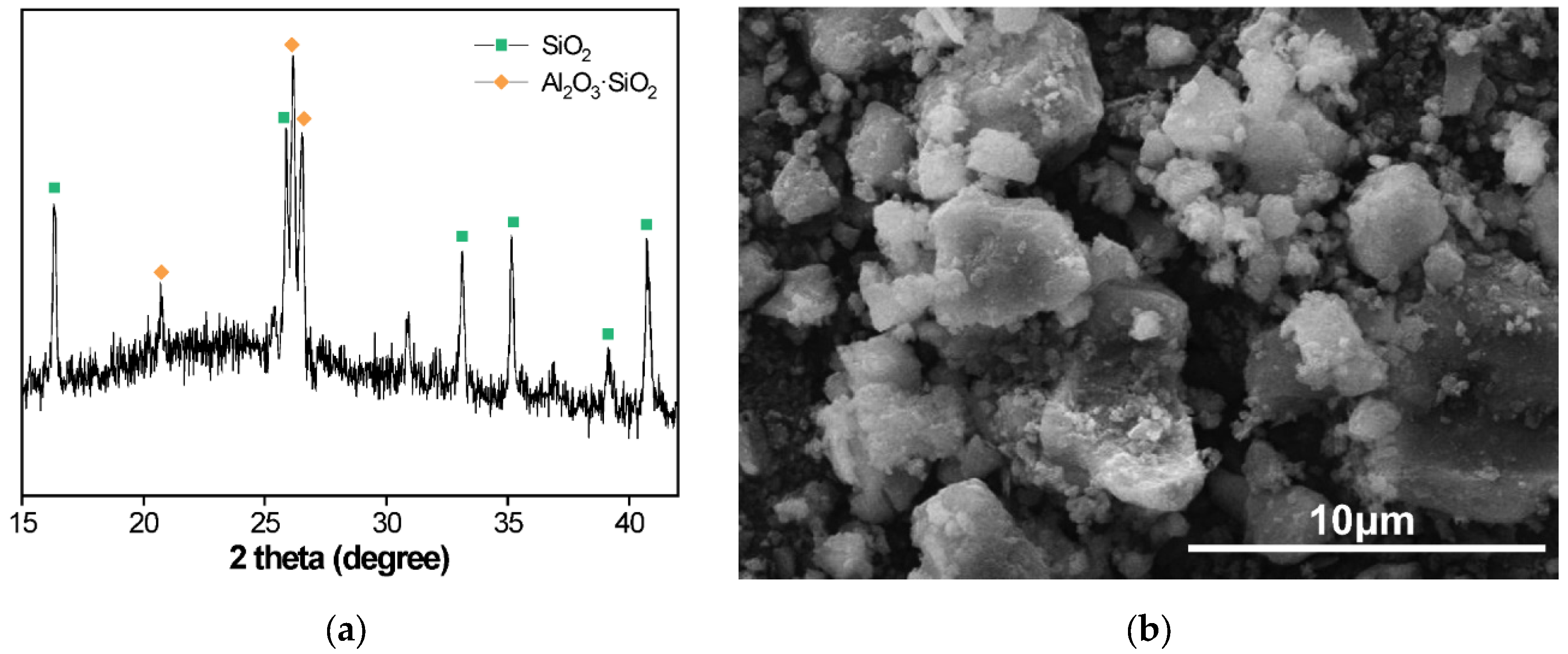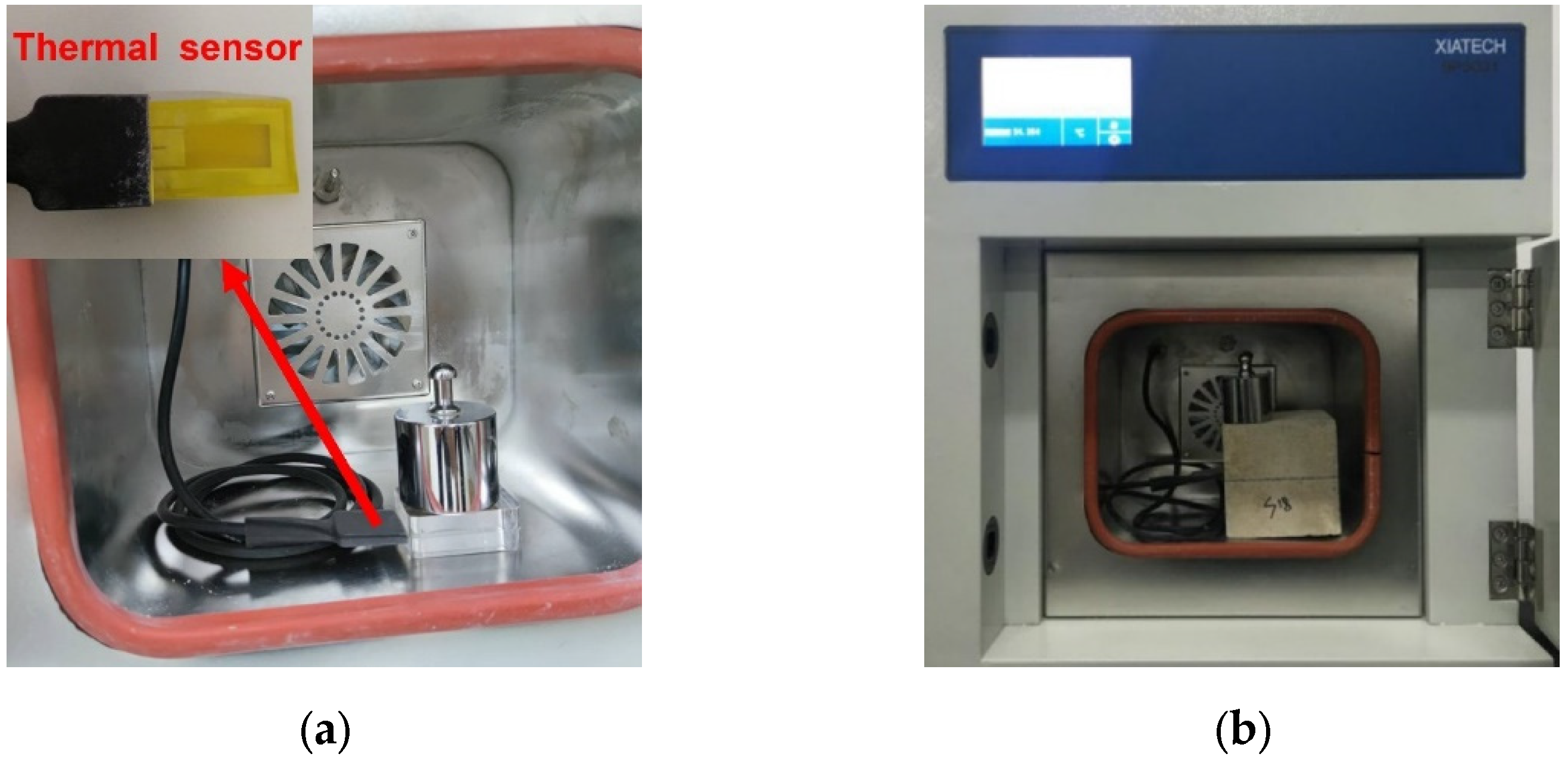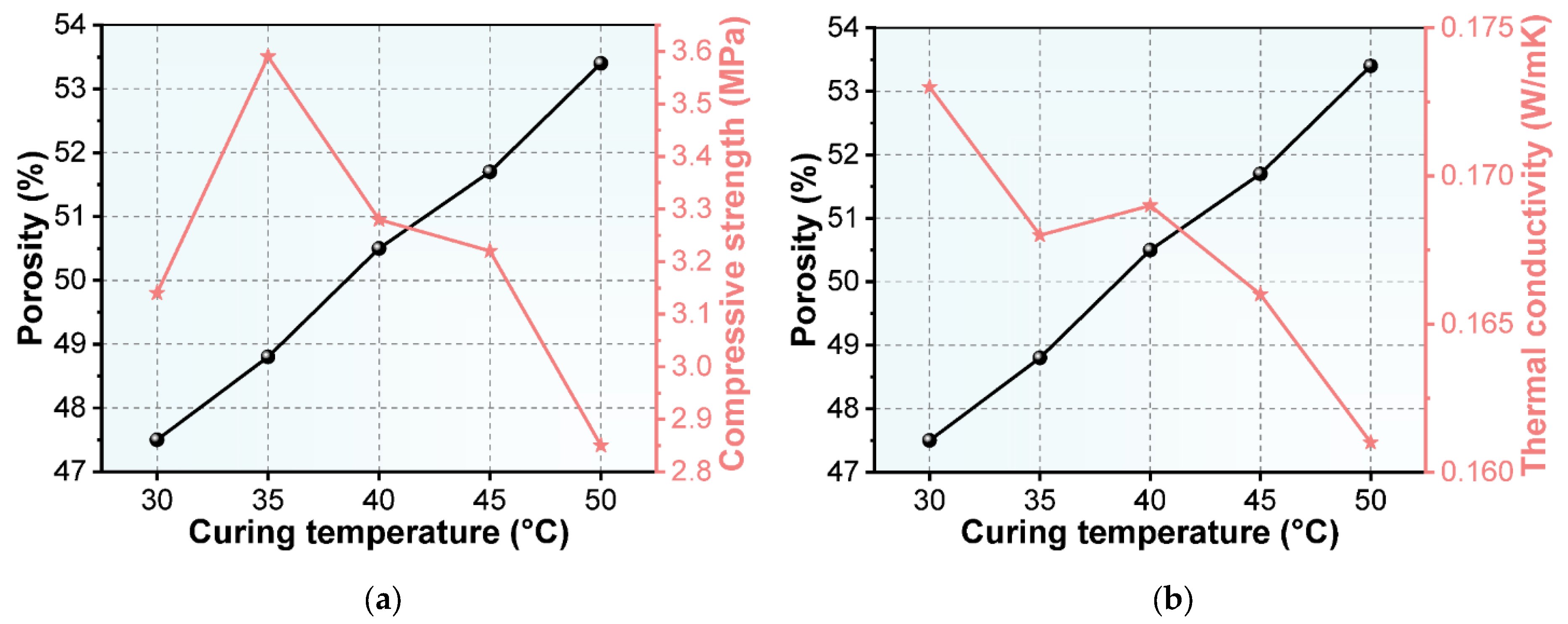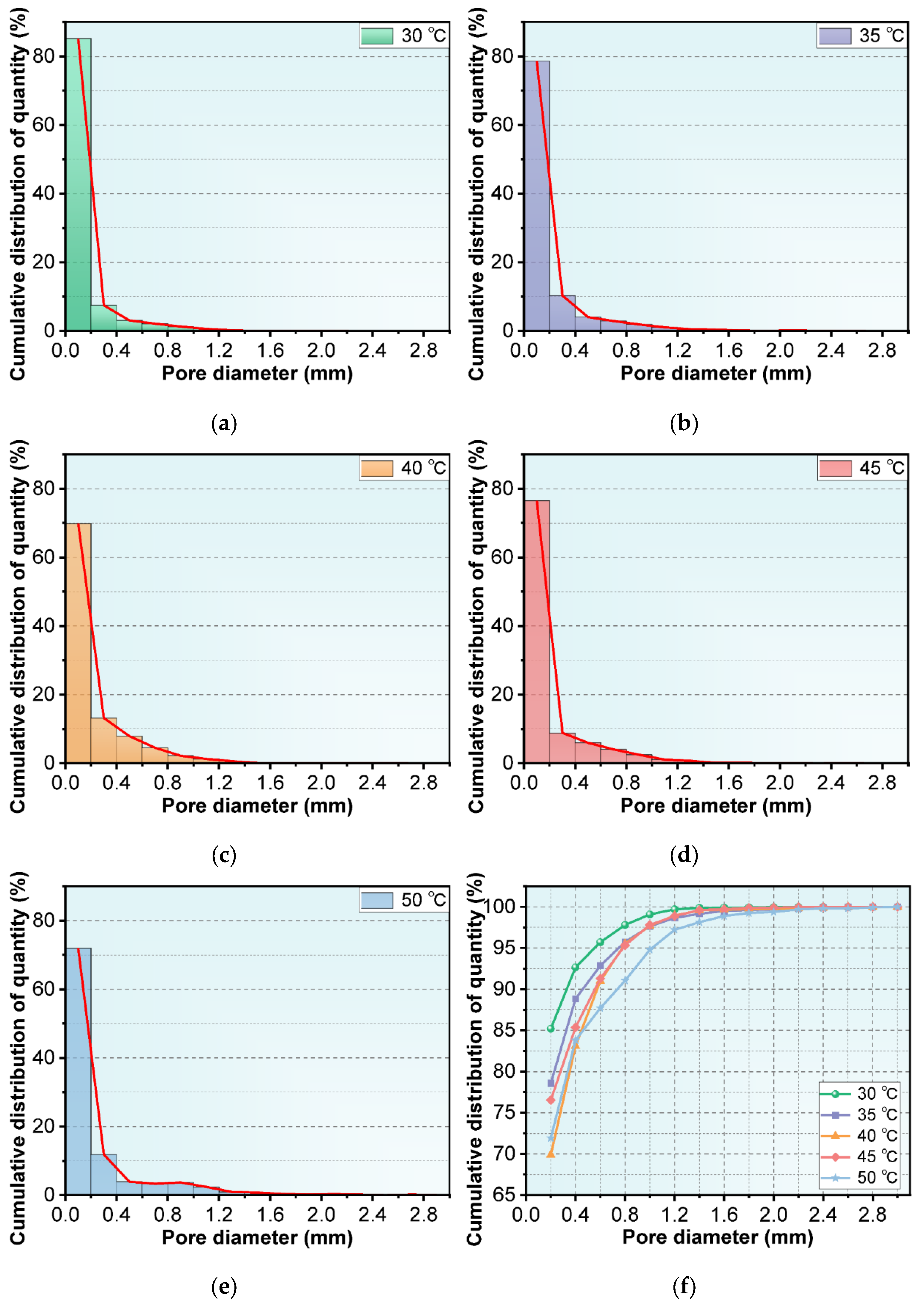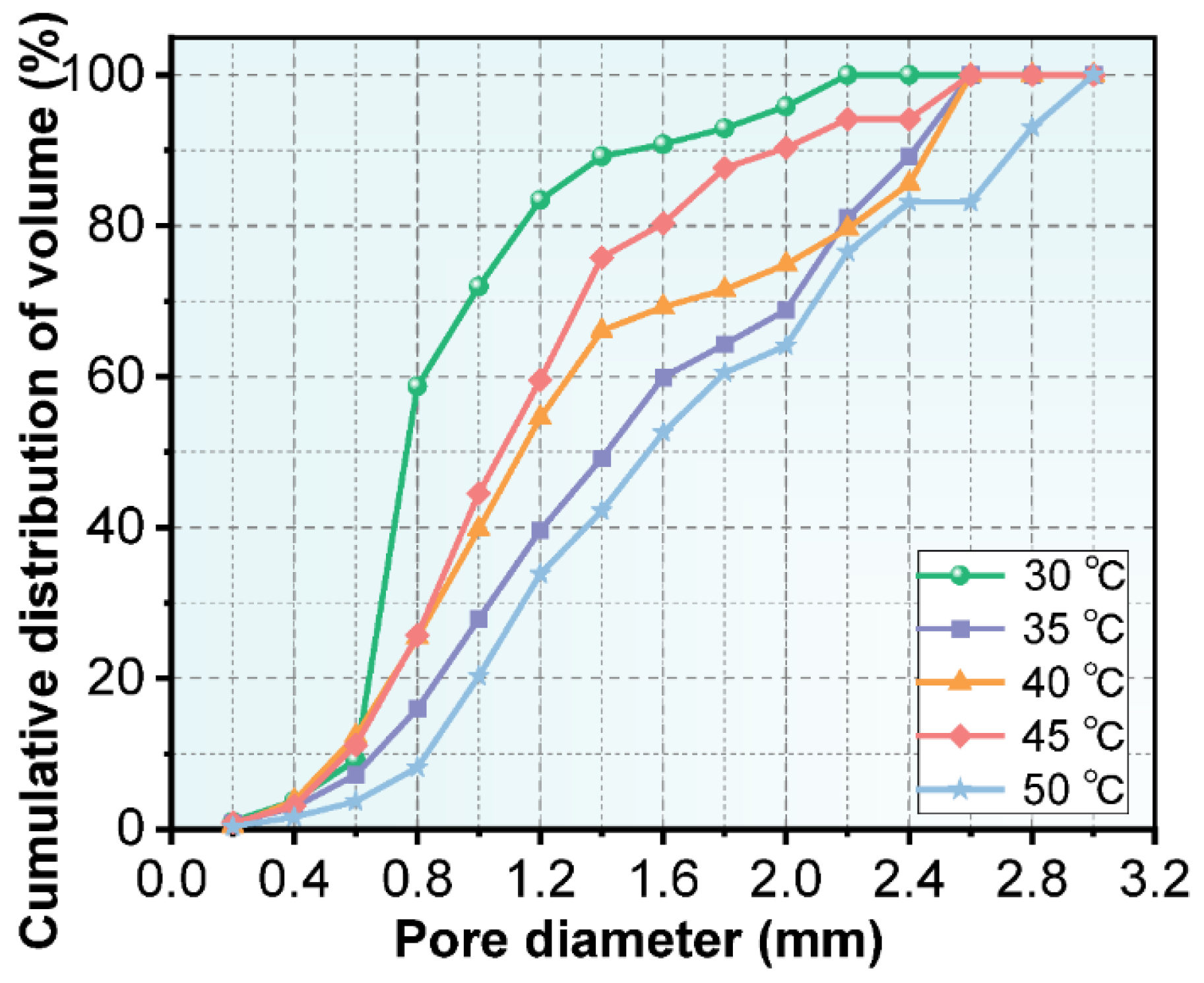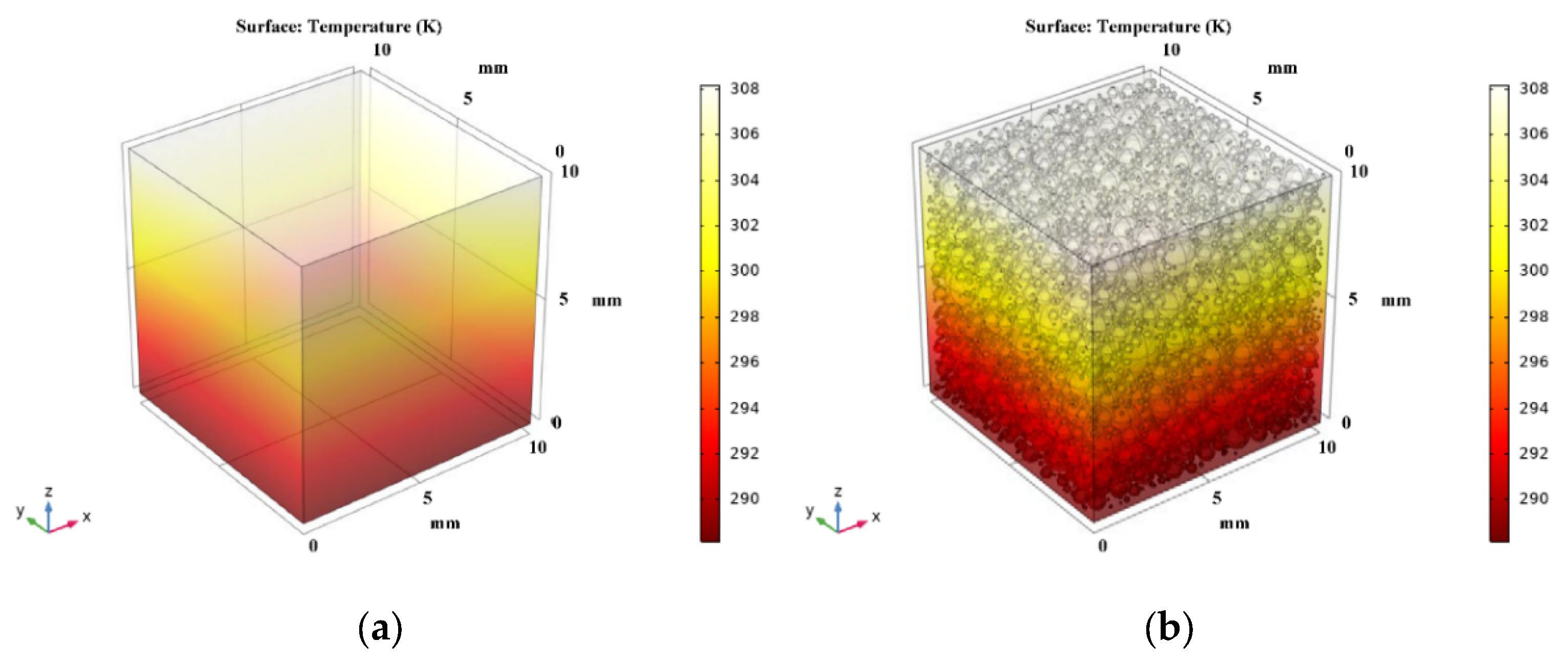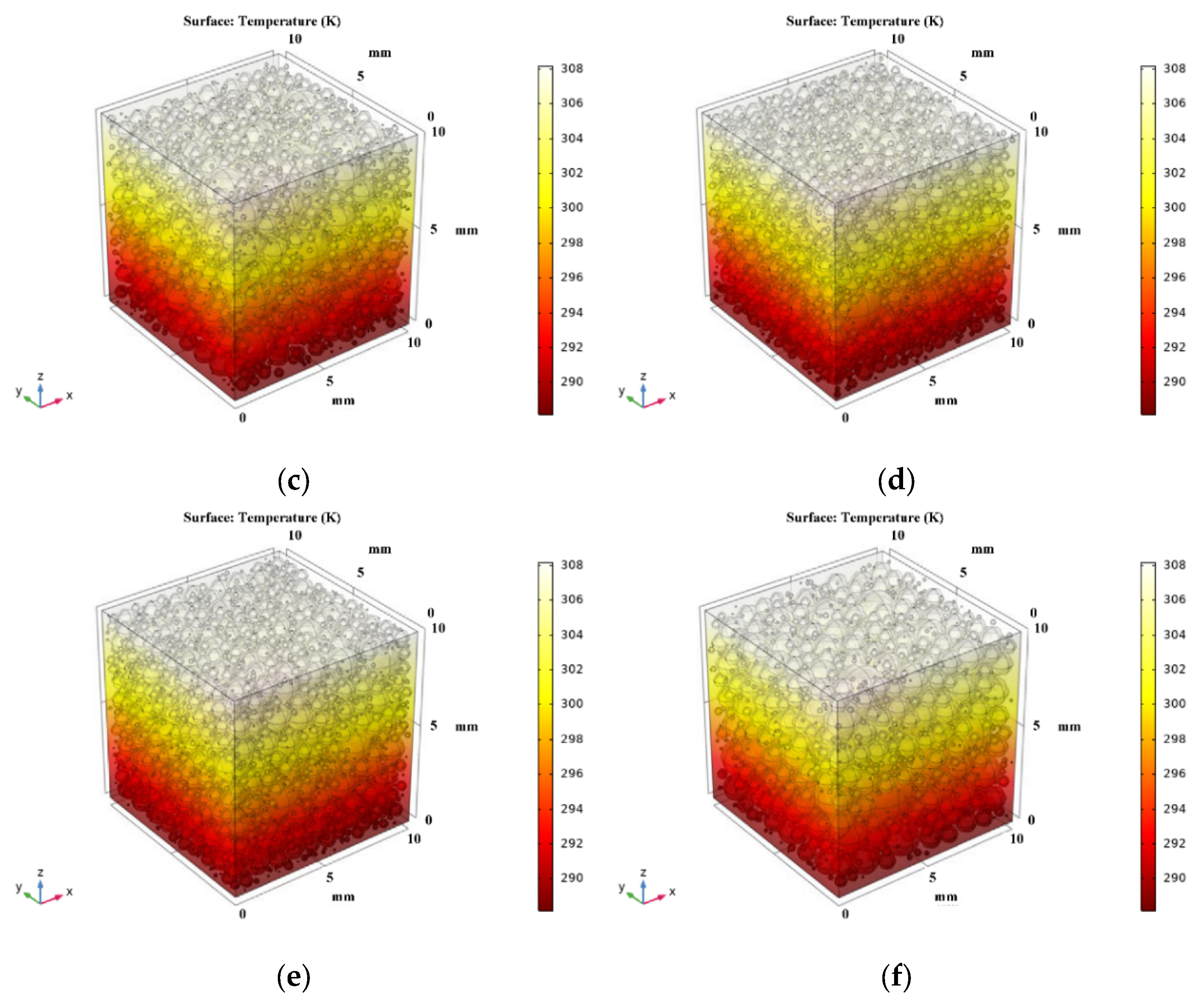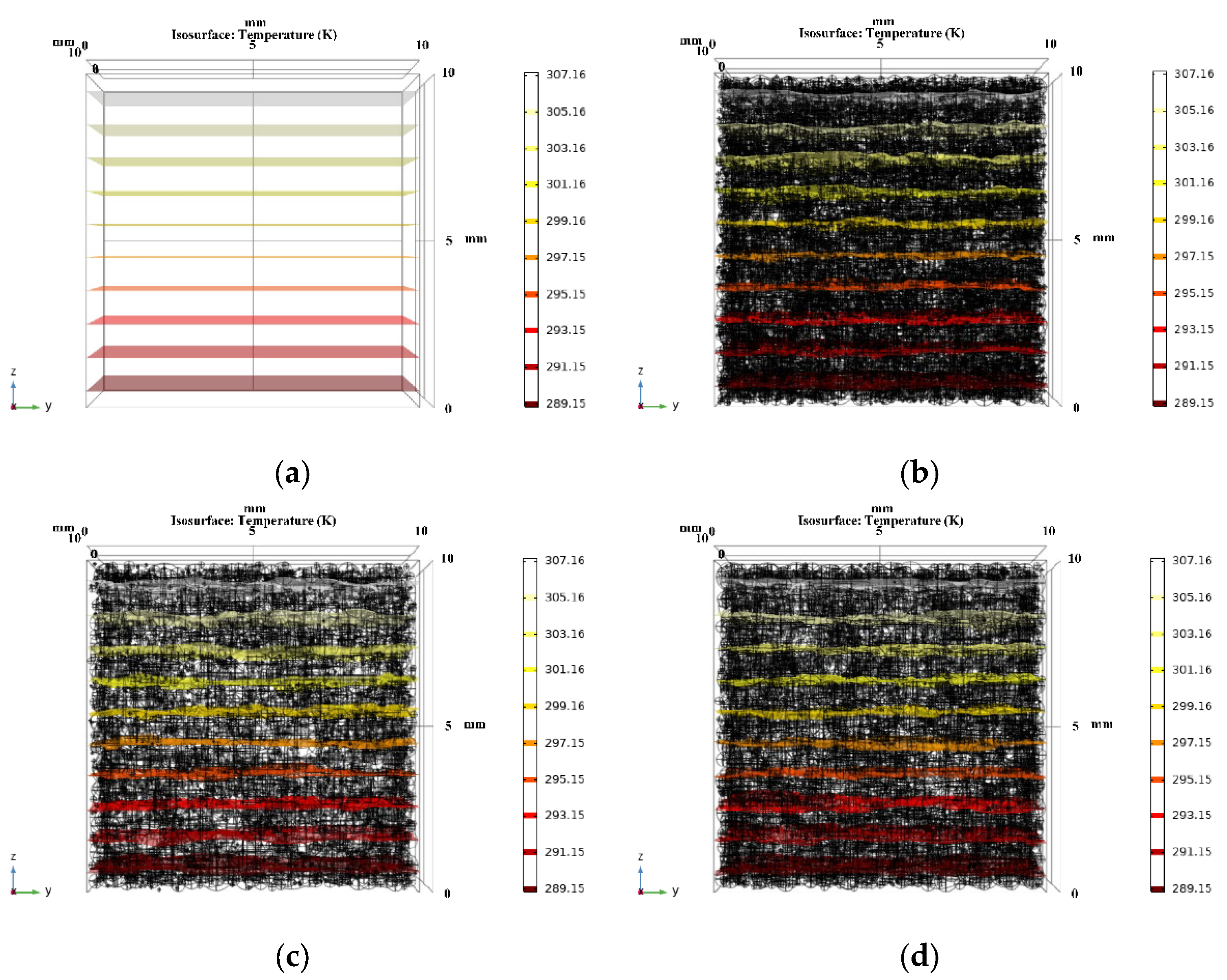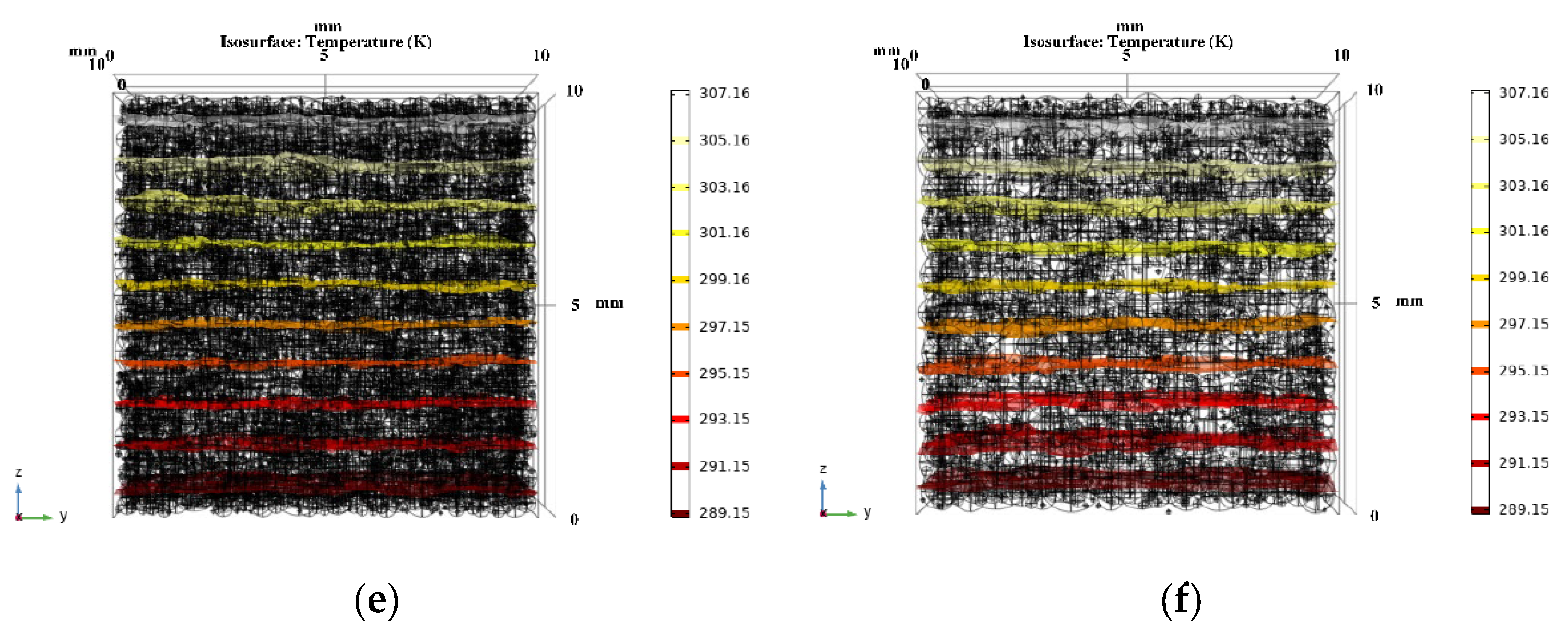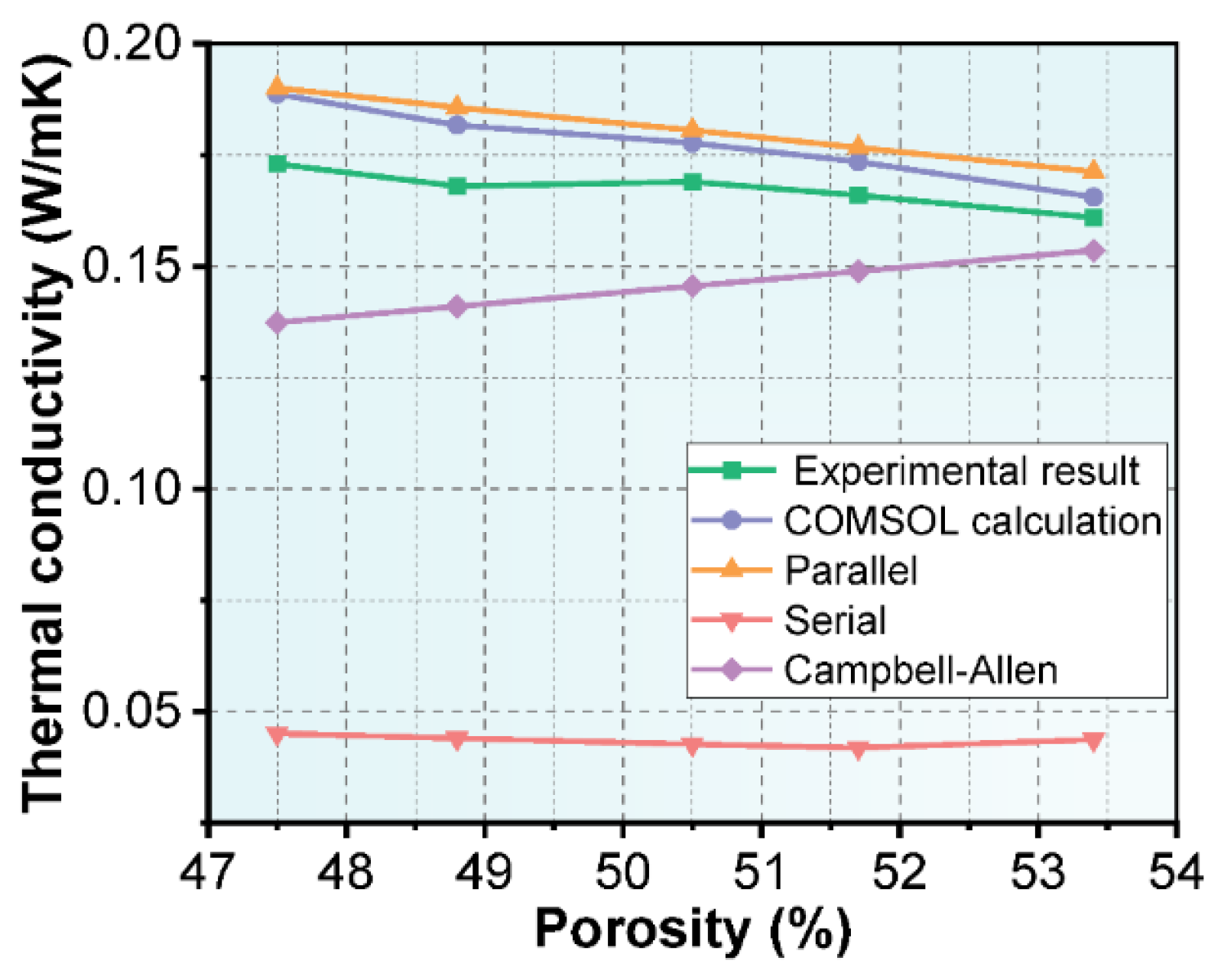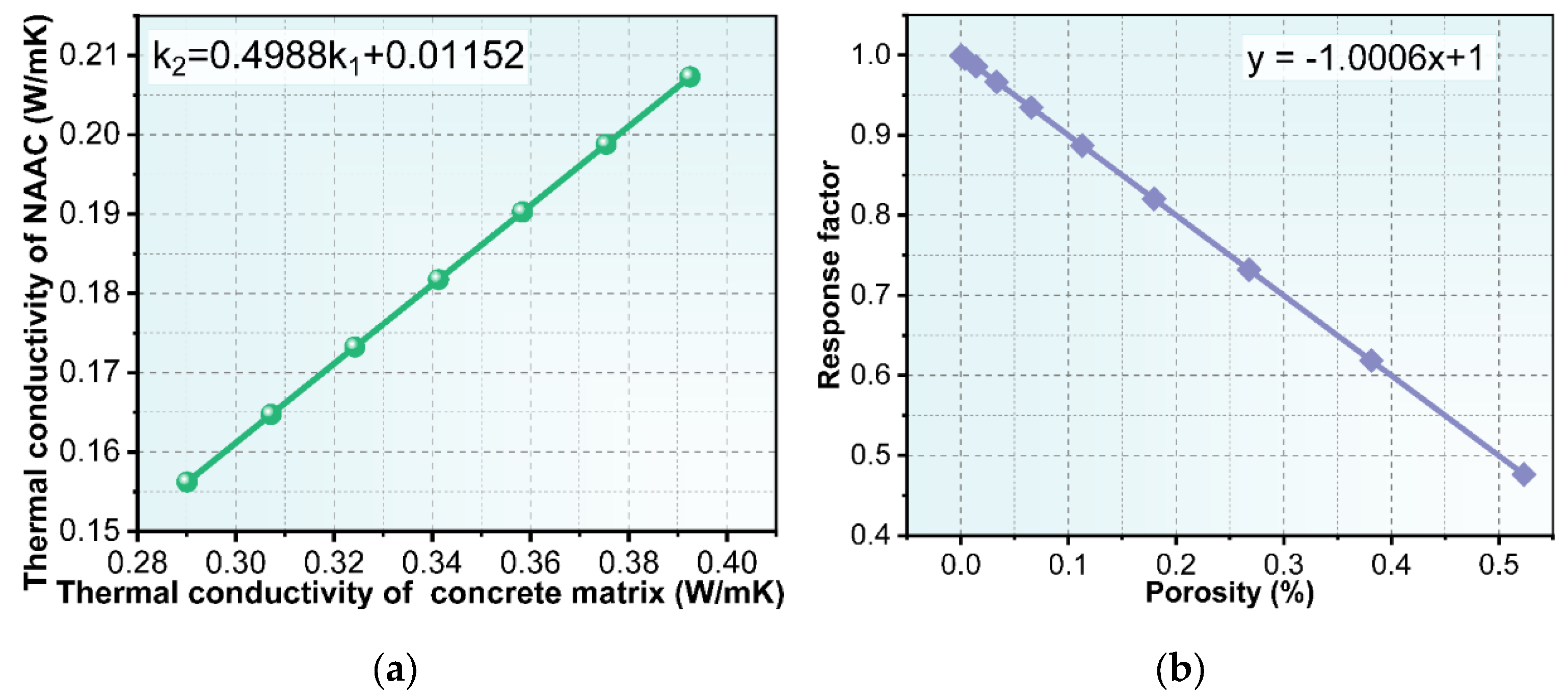1. Introduction
With the burgeoning call towards environmental-friendliness and sustainable development strategies, it is necessary to explore effective solutions for energy efficiency and carbon emission reduction in the construction. Heating and cooling costs of a building are the main parts of operating costs during the life cycle of the building and also one of the main sources of carbon emissions [
1]. Hence, excellent insulation building materials are considered important in the building’s design and construction.
Aerated concrete (AC) is a lightweight porous material made by introducing expansion agents into a slurry mixed with binders, supplementary cementitious material, fine aggregate, admixture and water [
2,
3,
4]. Due to its small bulk density, good thermal insulation and fire resistance, AC attracted extensive interest in the field of energy-efficient and thermal insulation [
5,
6,
7]. According to the production method, the AC can be divided into autoclaved aerated concrete (AAC) and non-autoclaved aerated concrete (NAAC). The production of NAAC does not require an environment of saturated steam under pressure, which is expensive and requires high energy consumption [
8,
9,
10]. Simultaneously, a large amount of recycled material can be reused as raw materials for AC production, revealing the great potential in increasing the utilization rate of industrial waste [
11,
12,
13,
14]. As one of the widely used building materials in modern construction, the production of concrete has generated a large amount of waste concrete due to remodeling and demolition processes [
15,
16]. Waste concrete is reused in low-value operations or end up in landfills, which can cause a serious waste of resources. Furthermore, the current production of cement clinkers is accompanied by a large amount of energy consumption and carbon dioxide emissions. Many researchers proved that recycled concrete fines can partially replace traditional cementitious materials in concrete production [
17,
18,
19,
20]. Consequently, incorporating recycled concrete aggregates in NAAC production is considered to be a cost-effective means for solving the construction waste disposal challenges and achieving environmental sustainability.
Many researchers studied the characteristics of concrete produced with recycled concrete aggregates, including mechanical strength, crack resistance, porosity and water absorption [
21,
22]. Nevertheless, the research on the thermal conductivity of NAAC mixed with recycled concrete fine powder is very limited. In the past few decades, most studies have focused on examining the influence of the mix ratio on the thermal conductivity of porous concrete in order to obtain improved thermal insulation properties [
23,
24,
25,
26,
27]. For example, Qu et al. [
23] showed that the thermal conductivity of AAC is mainly influenced by its dry density. Narayanan [
24] and Jerman et al. [
25] reported that the moisture content is a key factor affecting the thermal conductivity of AC, and the higher value of moisture contents led to higher thermal conductivities. Jeong et al. [
26] investigated the effect of water/cement ratios on the thermal conductivity of porous concrete with coal bottom ash. As a result of the research study, the authors found that thermal conductivities were significantly reduced by increases in the water/cement ratio.
The NAAC is a two-phase material with a concrete matrix and air, and one of its most important features is its internal porous structure. The macropores are formed from the chemical reaction between expansion agent and cementitious mixtures. The gas overflow after the addition of the expansion agent forms millions of uniformly sized and evenly distributed air voids in the concrete matrix, which are much bigger than the ordinary concrete [
2,
28,
29]. In recent years, a large number of studies proved that the thermal insulating ability of porous concrete is significantly affected by its pore structure [
30,
31]. To intensively study the heat transfer performance of porous materials, many studies attempted to link thermal conductivity with its pore structure parameters [
32,
33]. The constitutive models of two-phase materials between the pore structure and thermal behaviors either have been established by many researchers in an analytical or empirical way to estimate the effective thermal conductivity [
34,
35,
36]. For example, the parallel–series model and Campbell-Allen model are commonly used thermal conductivity models. Li et al. [
35] established a predicting model for a simple two-phase inclusion-matrix system based on an effective medium and mean-field theories and focused on the effect of pore shape on thermal conductivity. Othuman et al. [
36] proposed an analytical model of thermal conductivity with respect to foam concrete based on the assumed internal structure (porous) and constituents (cement, water and air). These models can quantitatively establish the relationship between porosity and thermal conductivity by using the thermal conductivity of two phases (concrete matrix and air) in porous concrete and the corresponding volume fraction. However, due to the fact that the microstructure of porous concrete is complex and the hypotheses of two-phase homogeneous material is oversimplified, the real properties of porous concrete are not been expressed exactly. Generally, all of the above models simply focused on changes in thermal conductivities caused by pore volume differences but neglected the effect of parameters such as pore size and distribution.
In fact, it is usually difficult to take the geometric details of the pores into consideration in experimental studies. Based on the reasonable calculation model and enough accurate data of the NAAC’s internal features, numerical simulations can quantitatively establish the relationship between pore structure and thermal conductivity, and these simulations have become one of the important methods for the prediction of effective thermal conductivity. For example, Miled et al. [
37] used five homogenization models to predict foam concrete’s thermal conductivity, and the experimental data and FEM simulations are used to identify the best model. Qin et al. [
38] used the steady-state method to numerically simulate the thermal conductivity of the foam glass. Ding et al. [
39] used COMSOL simulations to study the relationship between thermal conductivity and the porosity of concrete materials. For most existing numerical models, the pore structure in NAAC is reproduced by random methods; thus, the influence of production process and material properties differences on the real pore structure of NAAC is usually ignored. However, this issue is of great importance for creating appropriate pore structure for NAAC to predict thermal conductivities; thus, the prediction results of the numerical model based on the random pore generation method usually lack stability. A large number of pores in NAAC are macro-pores, and common pore structure characterization methods such as scanning electron microscope (SEM), mercury injection method, and gas permeation method are usually difficult to apply. With the development of computer and vision technology, image-based analyses have become one of the most promising techniques for identifying the concrete’s internal pore structure [
40,
41]. The digital image-processing techniques can use projected images or cross-sectional images to estimate gradation and analyze the data by using professional automatic image analyzers.
Herein, this study focuses on confirming the feasibility of accurately simulating the thermal conductivity of NAAC mixed with recycled concrete fine powders by COMSOL. Based on the real pore structure’s parameters (porosity, pore size and distribution) obtained by the stereo-image method, the model is established to avoid the effects of changing production processes and material properties on the pore structure and prediction of thermal conductivity. Firstly, the NAAC was prepared with recycled concrete fine powder as the auxiliary cementing material, and NAAC with different porosities and pore size distributions was produced by changing curing temperatures. The effect of porosity on the thermal conductivity and mechanical strength of NAAC is analyzed by experimental tests. Furthermore, the pore size distribution of NAAC with different porosity were characterized by stereology-image analyses, and the thermal conductivity prediction model was established by COMSOL steady-state analyses. The thermal conductivity results of COMSOL simulations, experiments and other classical theoretical models are compared; it is proved that the finite element model based on real pore structures obtained by the image method has good accuracy. Finally, the effects of porosity, pore size distribution and concrete matrix thermal conductivities on thermal conductivity of NAAC were studied, and the results offer a relationship between the pore structure and thermal conductivity of NAAC. This work provides a possible method for predicting the thermal conductivity of NAAC by examining pore structure reconstruction and using numerical simulations.
